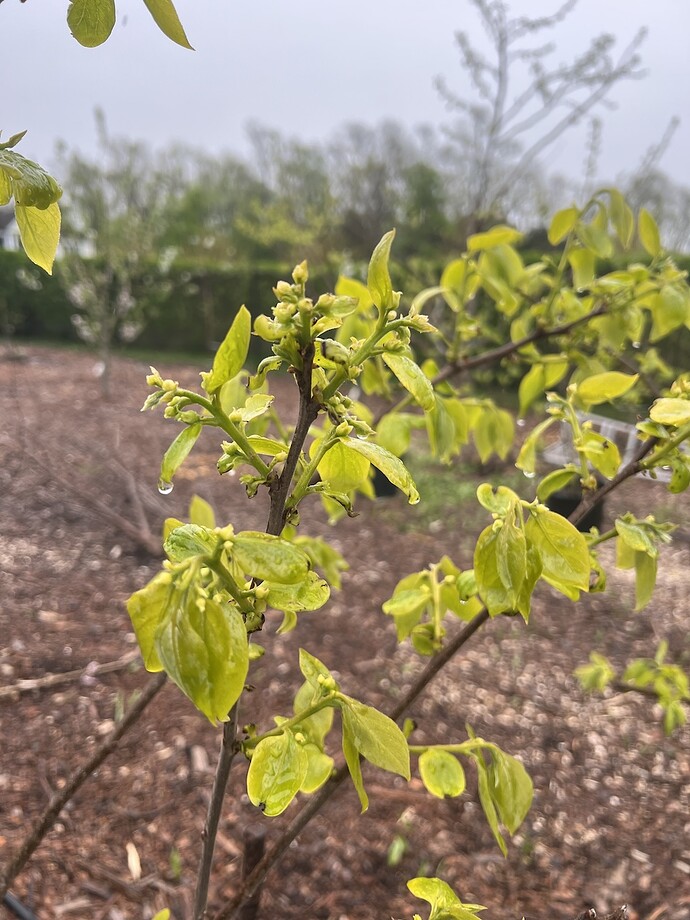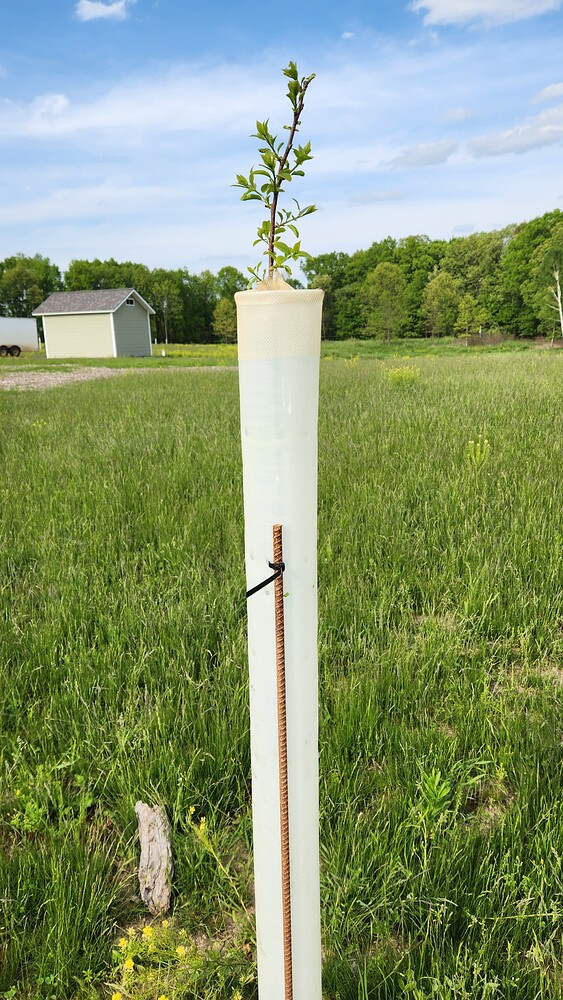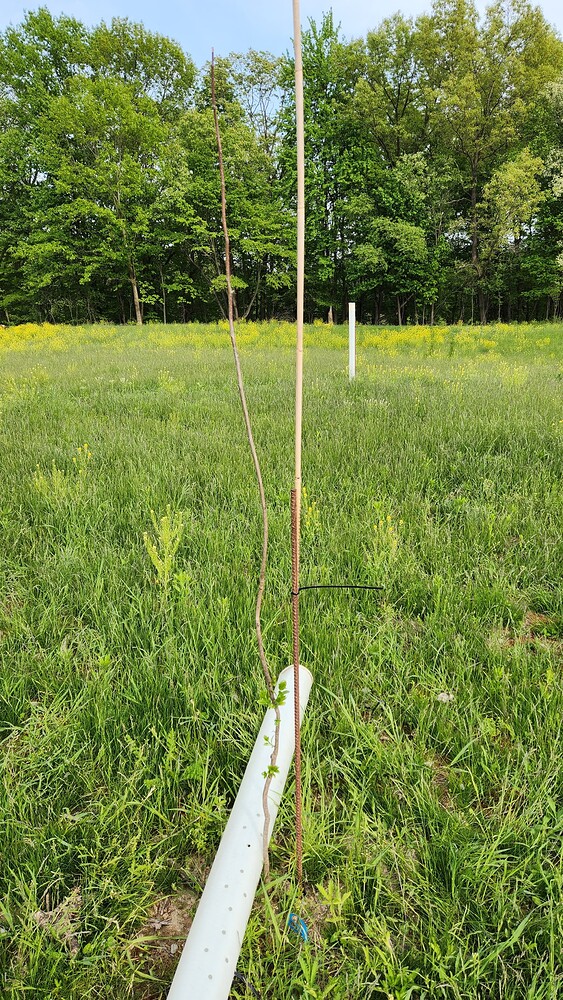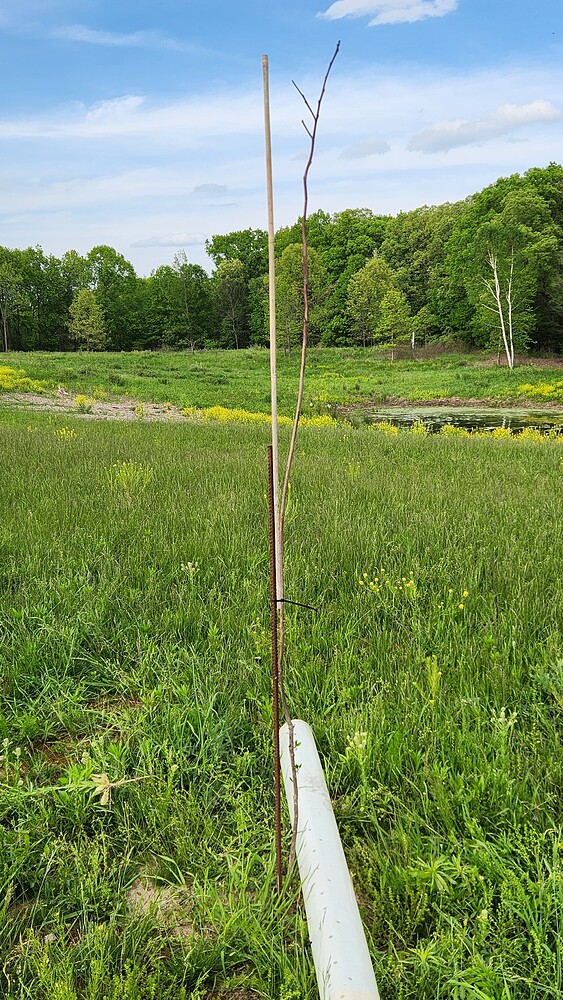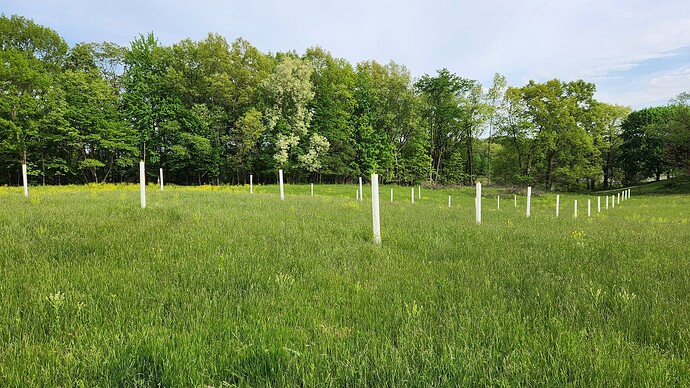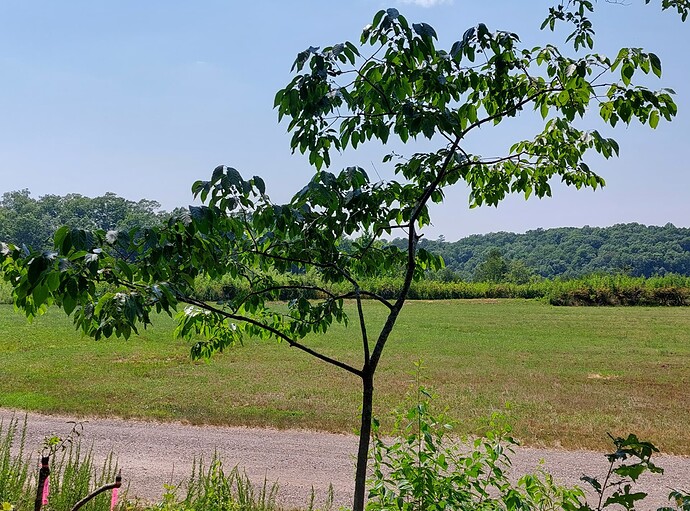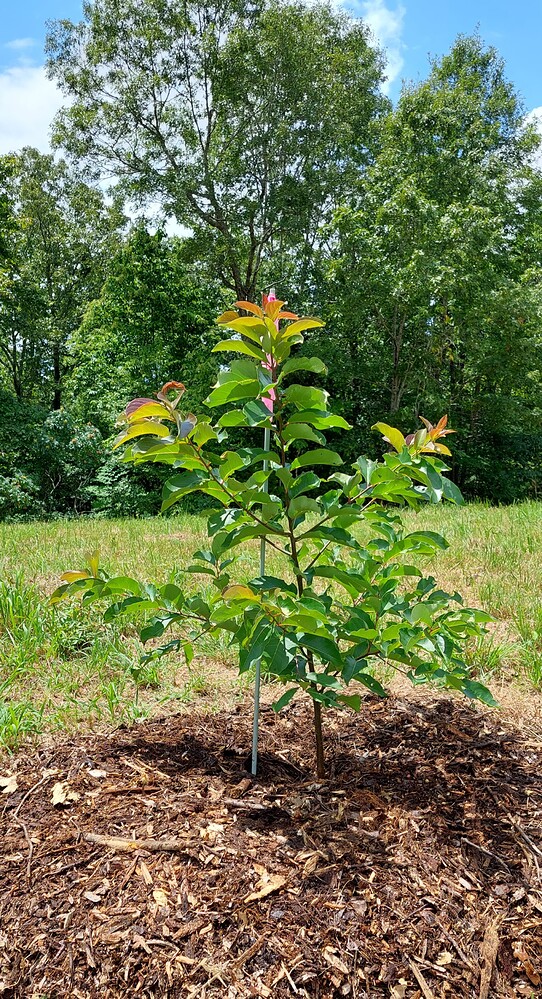So I grafted Izu and Suruga on my tree last year. Both took and appear to be setting fruit now. How long do the rest of you wait before letting new grafts carry fruit? Should I thin to maybe 1 or 2, or is there any reason to be concerned about the fruit set?
With grafts of 3 Americans, 1 hybrid and 1 Asian, I got fruit on 4/5 the next year. Not the Asian.
With grafts on small seedling trees, I never got fruit the next year.
In my part of the country, it’s still early in the season. Weather is cool and wet. There’s nothing major happening to the persimmons. Trees are sprouting but there are no female flowers, as yet. On the other hand, my potted PVNA variety “Chocolate” seems ready to bloom. Presumably lots of male flowers.
I’ve had chocolate bloom right after grafting onto a small rootstock. It just wants to flower from the start. Zenji Maru on the other hand, another PVNA, seems determined to make me wait.
No, it wasn’t the first to bud out and we didn’t have any real cold snap / freeze this year for once. I would also expect it to grow out of it eventually later in the season if it was cold damage, but it never does. But the damage certainly does look remarkably the same.
That Giombo of mine looked like trash all last year with those damaged leaves, but it didn’t put on any new growth after spring, either. My kaki are all pretty young (5 years max) but I have noticed that they don’t grow continuously throughout the season. Instead, they have one big, fast flush of growth in the spring, and then they just stay in a sort of holding pattern for the rest of the year. Maybe they will grow more in the summer when they get older (if the KSDS doesn’t claim them all).
How common is dieback of last year’s growth on young DV trees? I planted 29ish in ground last year. Some were still growing in late September and so I expected some dieback due to not hardening off in time. Very mild winter though for 6a.
However, some were done growing by perhaps September 1st. Figured they would do well. I had 3 that were a bit older and 6-8 feet tall. Two of those appear to have died back several feet, and are sprouting growth about 2 foot off the ground.
I’ll be grafting a lot of these soon. I guess I’ll have to prune them down to the height of the current new growth to ensure I’m grafting to living tissue.
This one did great:
Dieback:
Dieback:
The persimmon planting:
Very. Especially the younger they are.
Did you have tall tubes around them all winter? I had severe die back on some other trees from that years ago (perhaps a hardening off issue) and quit doing it before growing persimmon (where I only use 2’ tubes now because persimmon like to grow and my dog likes to eat deer).
Thanks - hopefully they will hold up better next winter.
They did have tubes on the entire time. I like to think the tubes didnt cause it: last summer I stuck a temperature probe in a tube in full sun on a calm day, and the temperature was only ~2F hotter than ambient, so they seem well vented.
For me, it was either tubes, or a lot of $$ deer fence. ![]() they eat everything.
they eat everything.
Deer are such a mess! People are using tubes with success. I have 2’ blue tubes on small trees and that seems to work well.
Persimmon love heat. I had once thought that the blue tubes might be doing something in the winter, and then I got to where I just left them on and didn’t notice much of a difference.
@snowflake … on all my young persimmons this spring that I had new scaffold branches developing on…
I notched the buds late winter… and that worked well… but as each of those scaffold branches started growing… they were going straight up… right next to the central leader.
I did some training on them to improve the crotch angles… changed them from about 10 degrees to near 90. Pointing near straight up… to pointing near straight out.
I figure a scaffold branch going near straight up… that eventually gets a load of fruit on it … will very likely bend down a huge amount… to hang down with fruit load… where one pointing out at 90 degree - flat out… will have much less stress put on it. It will have to bend a lot less to hang down with fruit weight.
Seemed like the right thing to do to me.
I have done my apples and pears the same way.
I have been impressed big time with how quickly my Novamac apple espellar has become so fruitful so quick… flat out horizontal limbs… in year 3 had fruit spurs at near 1 inch spacing.
I have never seen a apple tree do that before.
Not sure if flat out horizontal limbs has the same affect on persimmons… but giving that a try just in case it helps
TNHunter
Now that you mention it… persimmon are bad about bark inclusion. 10 degrees is definitely an annoying persimmon thing. I’ve probably had that more with a tree trying to make two twins tops… and then having the tree split.
Too horizontal might not be too good either but with fruit weight, they can’t go lower than the ground ![]()
A wild fruiting dv on my place in mostly shade with several naturally occurring flat/horizontal limbs.
A wild dv seedling in my field, full sun, at end of first season growth… with several naturally occuring near flat out horizontal limbs.
Seems to happen quite often naturally… surly it will be ok if I help these grafted trees do the same.
TNHunter
That has been my experience as well. I have yet to see southwest injury on a tubed tree. Not saying it couldn’t happen, but so far I have not observed it with high quality tubes. Trees seem to break dormancy at about the same time as well, (at least if there is a difference it is only a day or two from all the rest), from my observations over the last 2 years when I started using tubes more.
Yes, even the weight of wet big leaves without any fruit can weigh them down without any extra effort needed.
I’ve had good luck with tree tubes in general. With that said, a few years back we had an extended drought with temps often over 100F towards the end of summer. Every time I was there, the forecast called for rain, so I didn’t water them when I had a couple chances. The rain didn’t come for about 8 weeks. Most of the chestnuts and persimmons that had not yet grown out of the tube were fried. The following Spring, about 95% grew back from the roots. The trees that had made it out of the tubes were fine above the 5’ tubes. I think they’d grow faster out of the tubes, but for mass planting I’d still choose the tubes. Deer ate the test trees I planted without tubes.
I planted persimmons in zone 9a, central FL. I have a jiro fuyu, small precocious tree, small to medium fruits that is just a little bit square. I also have 2 unknown fuyu type trees. Some of their bigger fruits have faint ridge-ring on the top half, reminding me of the Tamopan. They taste like Fuyu. I have small Saijo, Chocolate & Hachiya trees, less than 5 ft tall.
The Chocolate (Maru?) started flowering right away but so far only managed to hold on to a few fruit this year. I think it pollinated all the Fuyus last year because the big fruits had seeds. I don’t mind the seeds, though. The fruits w/ seeds are bigger & have a better flavor, though I can’t describe it.
I’m looking forward to the Saijo this year. About 2 years ago, I managed to graft it to a shoot that sprouted after I attempted to kill my native persimmon. It outgrew the original source & has several fruits now.
I prefer the Saijo over the Hachiya. I still planted the Hachiya for variety. I only tasted store-bought Hachiya & maybe they are better when tree-ripened.
I’m still hoping to buy a Coffeecake someday.
I’m in Zone 9a FL. Your comment scared me. I never want to SDS on my trees.
My jiru fuyu is so petite & pretty that I have no complaints from our HOA that prohibits any edible plants in the front yard. I guess it passed as an ornamental Halloween tree to the ignorant idiots. I don’t want it to die.
I do have difficulty grafting Asian to native persimmons. It seems like the sap flow in spring is too strong & just flood out/kicks out the scions. So I’m wondering if the SDS is some kind of late incompatibility like some sort of overwhelmed plumbing.
One of my fuyu type did that. I had a hell of a time bending & tying it to a cinder block to force it to stop shooting for the stars. I learned not to prune a branch like that or it will just grow a few more aggressive shoots.
It took two seasons of bending & tying & splinting, but now the tree is calm & doesn’t look like Quasimodo anymore.
I have a really small backyard (And I’m only 5’2”) so I’m adopting the “Backyard Orchard Method”. Asian persimmons can be trained. But some pear trees are rebels.
It’s possible that it is just delayed graft incompatibility, but I lost several kaki this year to what appears to be SDS, and the fact that they were all afflicted within a short period together with the fact that there was wide variation in the trees affected (from trees just on their second or third leaf to well-established, productive five year-olds) makes me think that a pathogen is probably involved.
It seems that one of the most reasonable views, in light of the evidence, is that kaki SDS is caused by a pathogen that is lethal to D. kaki but to which D. virginiana is immune, and that the immune response of the rootstock is what kills the graft. This is what makes the disease appear to be due to rootstock incompatibility, when in fact, that may be just a symptom.
You can read about my experience this year, and the opinions of more educated contributors, here: Kaki sudden death syndrome -- help?
I hope it doesn’t hit you. I really enjoyed my kaki persimmons for the same reasons you do. I still have several that are unaffected so far by KSDS, but I’m pessimistic now, because if it is a pathogen, that pathogen is definitely here in my area.
